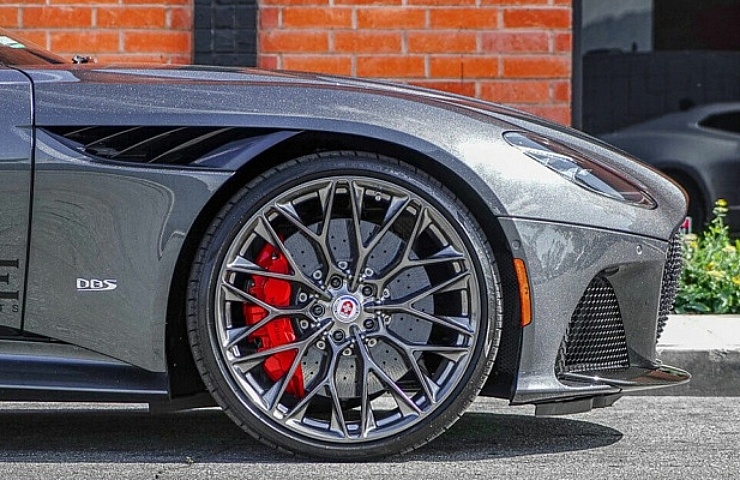How Cast and Forged Wheels Are Made

The US Mag Indy wheel is a cast aluminum classic.
To make a cast wheel, manufacturers pour molten aluminum into a mold. Once it cools, it’s removed from the mold, and voila—a cast wheel. The manufacturing process is easy and fast, so these wheels are an economical option.
A variation in this manufacturing process is to add a small amount of pressure into the build to create a stronger wheel with a more consistent aluminum density. The aluminum is fed into the mold from the bottom up under pressure to avoid air pockets. This is the process used in most wheel manufacturing today. It takes longer and is more labor-intensive, so the price is slightly higher than a standard cast wheel.

A Rays Engineering flow formed forged aluminum wheel
A flow-formed wheel is an improvement over the cast wheel. It, too, is cast with molten aluminum, but then the barrel of the cast wheel is heated, rolled, and shaped into the desired rim width and shape. This allows for the exterior look of a cast wheel with more strength in the wheel’s barrel, where the tire is installed.
Shop now for aftermarket car & truck wheelsA forged wheel also starts with aluminum, which is heated and pressurized into a billet cube. That’s why these wheels are also called “billet wheels.” This cube of dense aluminum is placed on a computer numerical control (CNC) machine, where excess aluminum is machined off until the final wheel design is produced. Forged wheels cost more to create, and their final price tag reflects this.
Read: Comparing Steel, Alloy and Carbon Wheels
Aluminum Wheel Designs
Appearance

A chunky cast aluminum Jeep Wrangler wheel
A cast wheel generally has simpler curves and less complex designs. The casting mold cannot create some of the sharp bends and edges that make for a distinctive wheel. Since a forged wheel is cut with a CNC machine, the wheel designer has more options in the final shape and look of the wheel.
Weight
For most wheel designs, a forged wheel has significantly less weight than a cast wheel. This is critical for a car’s handling, as the wheel is a major contributor to a vehicle’s unsprung weight. Unsprung weight refers to pieces of the car below the suspension parts of the car. So, having a forged wheel will result in better handling, especially on a track or a slalom course.
Shop now for performance wheel and tire packagesStrength

Toyota and BBS created this super strong forged TRD wheel.
Since a cast wheel’s density is inconsistent, it is inherently less structurally sound. For most uses, that still results in a decent wheel. But if the wheel hits curbs, potholes, or other road hazards, the cast wheel is likelier to crack, break, or shatter.
Cost
There is no denying that cast wheels are significantly cheaper than forged wheels. The cost of material and labor to craft a forged wheel is much higher. A set of cast wheels can be found for under $400, while some forged wheels can start around $1,000. Of course, the price jumps as the designs get more complex and the sizes increase. Some forged wheels retail for over $10,000

Original equipment Bentley forged aluminum wheels
Variations
With a cast wheel, the manufacturer produces a mold for specific uses and demands, so the options are limited to what molds the vendor has. With a forged wheel, the CNC machine does all the work. That means the manufacturer can alter the outcome and specifications by changing the directions given to the CNC machine.
Shop now for custom wheelsFinishes

A Niche KANAN forged monoblock aluminum wheel
Either kind of wheel can be customized with a color or finish. Some prefer to polish their aluminum wheels, while others want a chromed or satin finish. There are several options for the final finish.
Choosing a new wheel changes the look of any ride. When comparing cast to forged wheels, consider the advantages and differences and pick a style that suits you and your budget.





